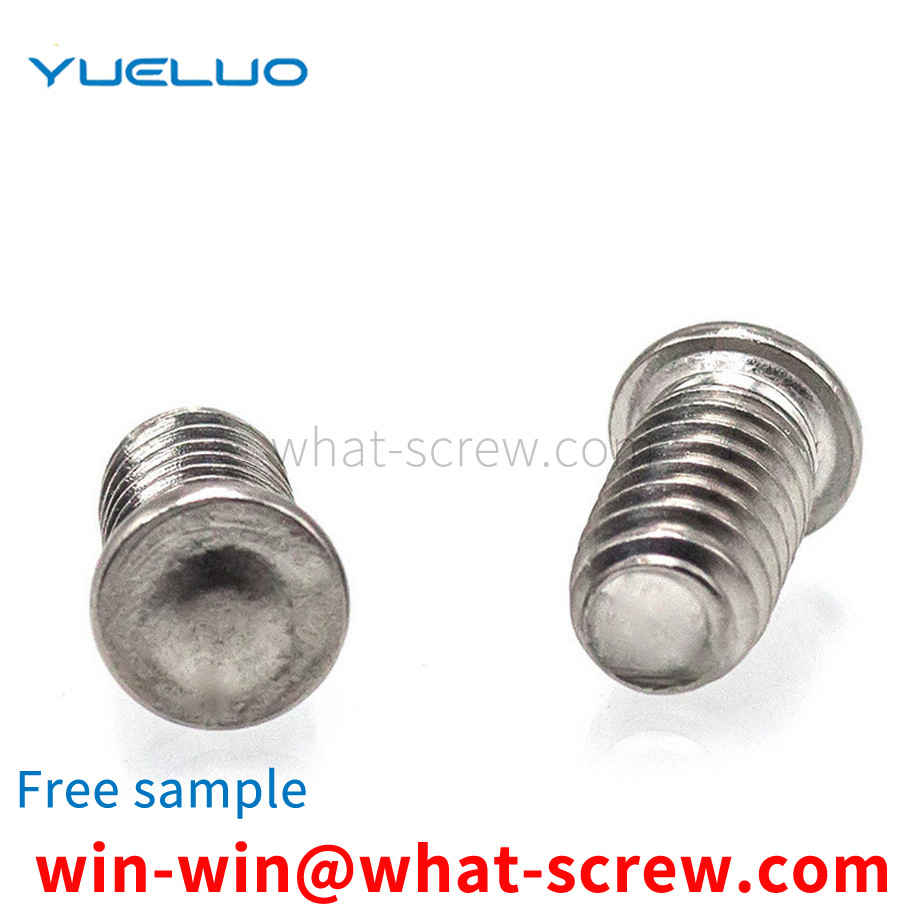What is the tolerance range of precision screws?
What is the tolerance range of precision screws?
Service Hotline
+86760-8787 8587We have more than ten years of production experience in the screw industry. The main products are: 4.8 hex screws, non-standard screw ratio bolts, GBT13 screws, one gun head each, bolts with holes, alloy auto bolts, welding nuts and nuts, non-slip locking Screw caps, multi-standard flange bolts, national standard carriage bolts, wall bolts, cup head screws without rubbing, hexagonal nylon column single head isolation column, double head screws, national standard lifting ring nuts and other fasteners, due to the different materials and specifications of the products. There are different prices, please contact us if necessary.


Ordinary thread Ordinary coarse thread: Feature code M+ Nominal diameter + Rotation + thread tolerance zone code (pitch diameter, top diameter) - Rotation length Ordinary fine thread: Feature code M+ Nominal diameter * thread pitch + direction of rotation + thread tolerance With code (middle diameter, top diameter) - the length of screwing is omitted for right-handed threads, and the left-handed thread is represented by LH. M 16-5g6g means coarse thread ordinary thread, nominal diameter 16, right-handed, the thread tolerance zone is 5g in the middle diameter and 6g in the major diameter, and the screwing length is considered as the medium length. M16×1 LH-6G means fine thread ordinary thread, nominal diameter 16, pitch 1, left-handed, thread tolerance zone medium diameter and major diameter are both 6G, and the screwing length is considered as medium length. The labeling format is: feature code (cylindrical pipe thread is represented by G, conical pipe thread is represented by NPT) + size code + tolerance grade code + rotation direction G1A--LH represents inch non-threaded sealing pipe thread, size code 1in, left-handed, tolerance The grade is A grade. Rcl/2 means inch thread seal taper pipe thread, size code 1/2in, right-handed.

self-locking screw comprises a screw main body, a metal screw head is arranged on the upper part of the screw main body, a thread is arranged in the middle part of the screw main body, an interference groove is arranged on both sides of the upper part of the screw main body, and the line of the interference groove is arranged. The included angle is 280-365° with the horizontal line. The bottom of the screw body is provided with an elastic chuck, and the elastic chuck includes an optical axis and a conical head. Guangdong Yueluo Hardware Industry Co., Ltd. Guangdong Yueluo Hardware Industry Co., Ltd. adopts the design of elastic collet, and the screw is provided with threaded segments and interference grooves, so that during the screwing process, the interference groove of the optical axis between the two threaded segments is formed along the screw. The axial elastic force achieves the effect of reliable self-locking, which is easy to use and has high tuning efficiency.


There are two typical pin shearing fixture tooling, among which the traditional fixture shown in Fig. 1 is more complicated and consists of fixture, spacer, washer and shearing block guide post, hardened bushing, shearing block and so on. The cylindrical pin is installed in the hardened bushing, and the axial load is applied through the shear block to complete the shear test. The fixture is complicated in manufacture and has many consumables, because the size of the hardened bushing is similar to that of the cylindrical pin. , and to keep the notch of the cylindrical pin upward, it is difficult to install before the test, and the broken cylindrical pin after the test remains in the hardened bushing and is difficult to remove.

The performance grade is divided into 15 grades, stainless steel is grade 51, and the open type blind rivet is divided into two types: countersunk head and flat round head according to the shape of the head. Among them, open blind rivets with performance levels of 10 and 11 are widely used. In 2006, the National Standards Committee revised and released GB/T 12617.1-2006 Open Type Countersunk Head Blind Rivets Class 10 and 11 and GB/T 12618.1-2006 Open Type Flat Round Head Blind Rivets Class 10 and 11. National standards for 10 and 11 class open blind rivets. The two new standards, respectively adopting ISO15978:2002 and ISO15977:2002 international standards, were released on July 5, 2006 and officially implemented on December 1, 2006. After implementation, it will replace the two old standards GB/T 12617-1990 Open Type Countersunk Head Blind Rivets and GB/T 12618-1990 Open Type Oblate Head Blind Rivets.

The above content is uploaded by Yueluo or the Internet. If there is any copyright issue, please contact [email protected].

What is the tolerance range of precision screws?

How to choose the right stainless steel screw manufacturer?

Why is there an R angle under the head of the hexagon head s...

We have more than ten years of production experience in the ...

We have more than ten years of production experience in the ...

We have more than ten years of experience in screw industry ...

We have more than ten years of experience in screw industry ...